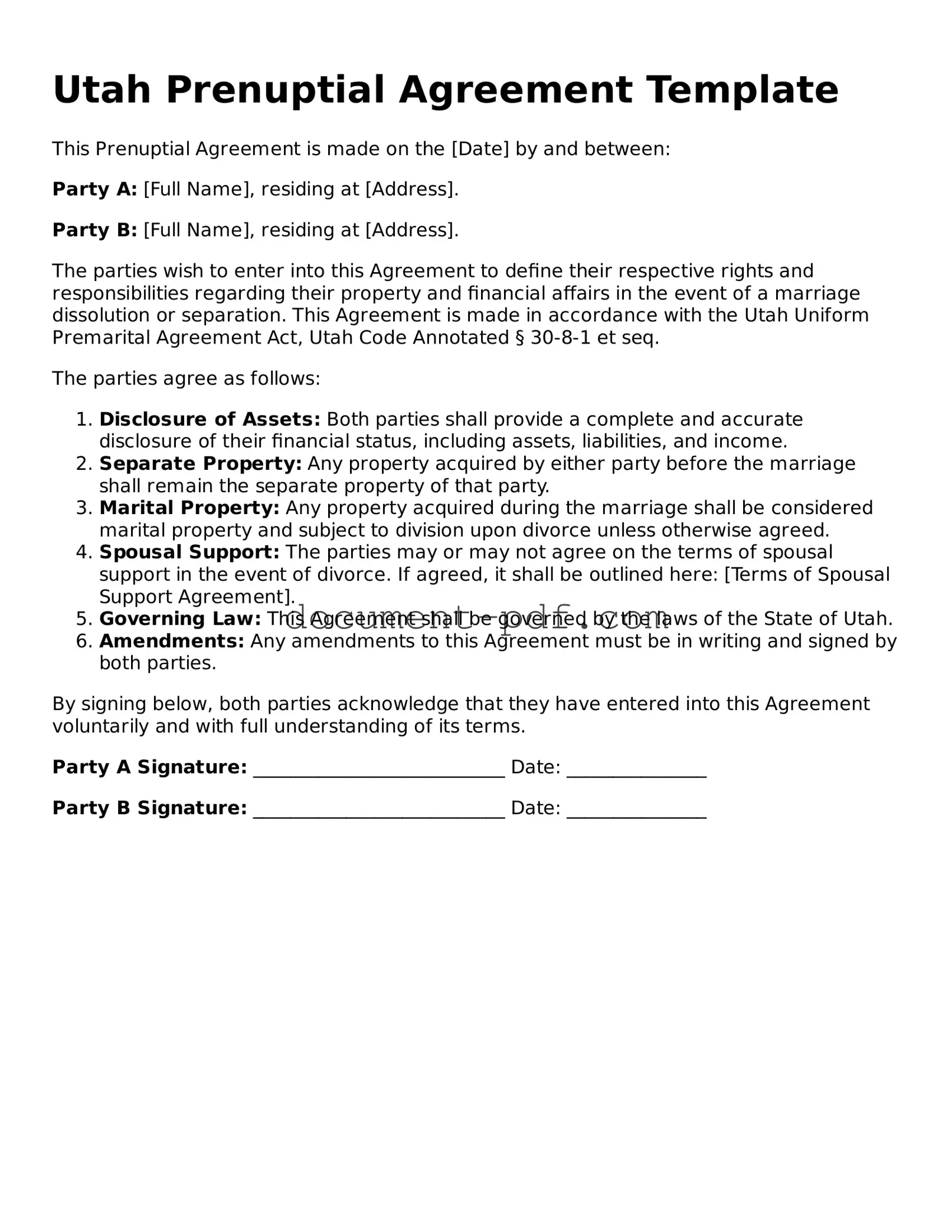Utah Prenuptial Agreement Template
This Prenuptial Agreement is made on the [Date] by and between:
Party A: [Full Name], residing at [Address].
Party B: [Full Name], residing at [Address].
The parties wish to enter into this Agreement to define their respective rights and responsibilities regarding their property and financial affairs in the event of a marriage dissolution or separation. This Agreement is made in accordance with the Utah Uniform Premarital Agreement Act, Utah Code Annotated § 30-8-1 et seq.
The parties agree as follows:
- Disclosure of Assets: Both parties shall provide a complete and accurate disclosure of their financial status, including assets, liabilities, and income.
- Separate Property: Any property acquired by either party before the marriage shall remain the separate property of that party.
- Marital Property: Any property acquired during the marriage shall be considered marital property and subject to division upon divorce unless otherwise agreed.
- Spousal Support: The parties may or may not agree on the terms of spousal support in the event of divorce. If agreed, it shall be outlined here: [Terms of Spousal Support Agreement].
- Governing Law: This Agreement shall be governed by the laws of the State of Utah.
- Amendments: Any amendments to this Agreement must be in writing and signed by both parties.
By signing below, both parties acknowledge that they have entered into this Agreement voluntarily and with full understanding of its terms.
Party A Signature: ___________________________ Date: _______________
Party B Signature: ___________________________ Date: _______________
